The automotive world has witnessed a surge in interest for compact electric and hybrid vehicles, exemplified by the Fiat 600 and Renault R5. Both models showcase unique attributes and innovations that cater to modern-day driving. In this article, we will dive deep into a technical comparison of these two iconic vehicles.
Fiat 600 vs Renault R5 – Differences & prices compared
Two cars, one duel: Fiat 600 meets Renault R5.
Which one wins in performance, efficiency and value for money? Find out now!
Design and Body Type
When it comes to body type, the Fiat 600 stands out as an SUV, exuding a sense of ruggedness and versatility. With dimensions of 4178 mm in length and a width of 1779 mm, it provides ample space for five passengers and moderate cargo capacity, boasting a trunk space of 385 liters.
On the other hand, the Renault R5 takes the form of a hatchback. Measuring 3922 mm long and 1744 mm wide, it offers a slightly smaller footprint while still accommodating five occupants. Its trunk volume, while smaller at 326 liters, is still practical for urban commuting.
Powertrain Options
The Fiat 600 impresses with its range of power options, featuring both petrol MHEV and electric variants. The available power outputs range from 100 to 156 HP, with a robust torque output between 205 and 260 Nm, depending on the engine choice. The SUV variant not only emphasizes performance but also boasts a commendable fuel consumption of 4.8 L/100 km, along with an electric variant that has a consumption rate of 15.1 kWh/100 km.
In contrast, the Renault R5 offers an all-electric powertrain with outputs ranging from 95 to 150 HP and torque figures up to 245 Nm. With a 40 kWh battery, the model promises an electric range of up to 405 km, making it a viable option for eco-conscious drivers.
Performance and Acceleration
The Fiat 600's performance figures are impressive for an SUV, with a 0-100 km/h acceleration time of as low as 8.5 seconds. This, combined with a maximum speed of up to 200 km/h, truly encapsulates the essence of a high-performing compact vehicle.
The Renault R5, while slightly less powerful, is no slouch either. It achieves a swift 0-100 km/h time of just 8 seconds, allowing for a zippy urban driving experience. The top speed, however, is capped at 150 km/h, which is adequate for city and moderate highway travel.
Efficiency and Sustainability
Fuel efficiency is a cornerstone of modern automotive engineering, and both vehicles excel in this regard. The Fiat 600's electric version emits zero CO2, thanks to its innovative battery technology, which has a capacity of 51 kWh for extended range capabilities.
The Renault R5 also boasts an impressive CO2 emissions rating of zero, aided by its efficient electric drivetrain. Its battery capacity, at 40 kWh, provides a solid range for day-to-day driving while promoting sustainable practices.
Interior and Comfort Features
Both vehicles are designed with user comfort in mind. The Fiat 600 offers a spacious cabin with seating for five and a range of modern infotainment and connectivity features that prioritize comfort and convenience.
The Renault R5 also emphasizes practicality with a 5-seat configuration and a well-thought-out interior. Although slightly smaller than its Fiat counterpart, it effectively balances space with functionality.
Conclusion
In summary, the Fiat 600 and Renault R5 each hold their own in the competitive automotive landscape. The Fiat 600 dominates in terms of power output and SUV versatility, while the Renault R5 shines with its agility and commitment to sustainability. Ultimately, the choice between the two will come down to personal preference, individual driving needs, and lifestyle choices.
Here’s where it gets real: The technical differences in detail
Costs and Efficiency:
Looking at overall running costs, both models reveal some interesting differences in everyday economy.
Fiat 600 has a barely noticeable advantage in terms of price – it starts at 21800 £, while the Renault R5 costs 23900 £. That’s a price difference of around 2066 £.
In terms of energy consumption, the advantage goes to the Renault R5: with 14.80 kWh per 100 km, it’s minimal more efficient than the Fiat 600 with 15.10 kWh. That’s a difference of about 0.30 kWh.
As for range, the Fiat 600 performs hardly perceptible better – achieving up to 409 km, about 4 km more than the Renault R5.
Engine and Performance:
Power, torque and acceleration say a lot about how a car feels on the road. This is where you see which model delivers more driving dynamics.
When it comes to engine power, the Renault R5 has a clearly edge – offering 540 HP compared to 156 HP. That’s roughly 384 HP more horsepower.
In acceleration from 0 to 100 km/h, the Renault R5 is significantly quicker – completing the sprint in 3.50 s, while the Fiat 600 takes 8.50 s. That’s about 5 s faster.
In terms of top speed, the Renault R5 performs clearly perceptible better – reaching 270 km/h, while the Fiat 600 tops out at 200 km/h. The difference is around 70 km/h.
There’s also a difference in torque: Renault R5 pulls convincingly stronger with 4800 Nm compared to 260 Nm. That’s about 4540 Nm difference.
Space and Everyday Use:
Cabin size, boot volume and payload all play a role in everyday practicality. Here, comfort and flexibility make the difference.
Both vehicles offer seating for 5 people.
In curb weight, Fiat 600 is barely noticeable lighter – 1355 kg compared to 1447 kg. The difference is around 92 kg.
In terms of boot space, the Fiat 600 offers to a small extent more room – 385 L compared to 326 L. That’s a difference of about 59 L.
In maximum load capacity, the Fiat 600 performs to a small extent better – up to 1256 L, which is about 150 L more than the Renault R5.
When it comes to payload, Fiat 600 barely noticeable takes the win – 430 kg compared to 418 kg. That’s a difference of about 12 kg.
Who comes out on top?
Overall, the Renault R5 shows itself to be wins the duel decisively and secures the title of DriveDuel Champion.
It convinces with the more balanced overall package and proves to be the more versatile choice for everyday use.
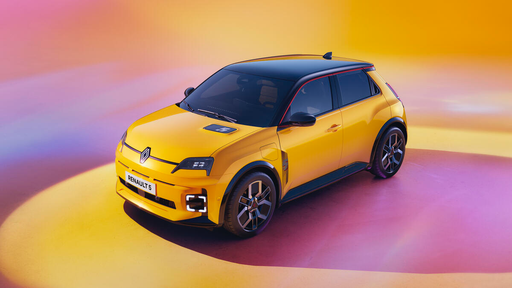 @ Renault Group Media
@ Renault Group Media
Renault R5
Fiat 600
The Fiat 600 is small, cheeky and utterly charming, a pocket-sized Italian that packs more personality than its size suggests. Ideal for city buyers who want fuss-free motoring with a playful driving character, it puts smiles ahead of spreadsheets.
details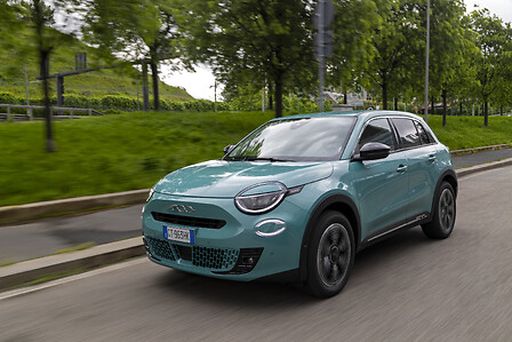 @ Fiat / Stellantis Media
@ Fiat / Stellantis Media
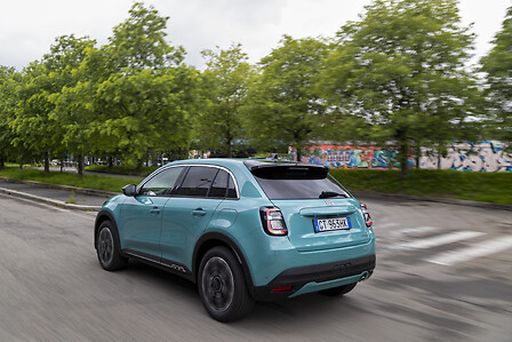 @ Fiat / Stellantis Media
@ Fiat / Stellantis Media
Renault R5
The Renault 5 is a cheeky city car that marries retro charm with modern flair, its playful looks promising smiles before you even start the engine. Practical enough for daily life yet lively enough to make short trips feel like mini adventures, it’s an irresistible choice for buyers who prefer personality to bland practicality.
details @ Renault Group Media
@ Renault Group Media
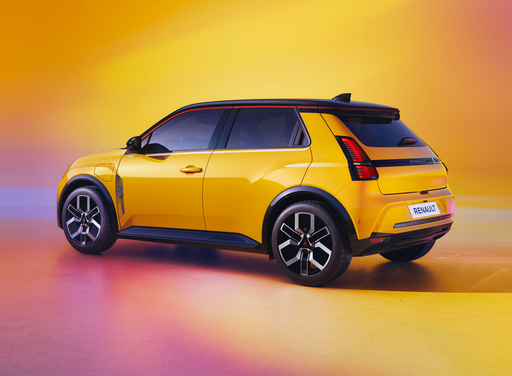 @ Renault Group Media
@ Renault Group Media
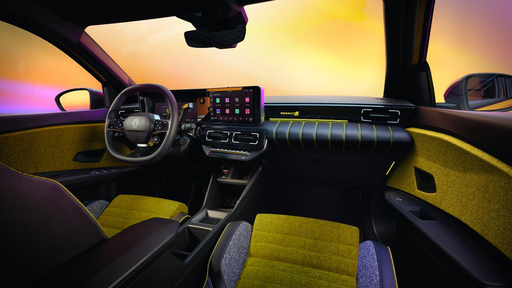 @ Renault Group Media
@ Renault Group Media
 @ Fiat / Stellantis Media
@ Fiat / Stellantis Media
|
 @ Renault Group Media
@ Renault Group Media
|
|
|
|
Costs and Consumption |
|
|---|---|
|
Price
21800 - 31300 £
|
Price
23900 - 137100 £
|
|
Consumption L/100km
4.80 L
|
Consumption L/100km
-
|
|
Consumption kWh/100km
15.10 kWh
|
Consumption kWh/100km
14.8 - 15.2 kWh
|
|
Electric Range
409 km
|
Electric Range
307 - 405 km
|
|
Battery Capacity
51 - 52 kWh
|
Battery Capacity
40 - 52 kWh
|
|
co2
0 - 109 g/km
|
co2
0 g/km
|
|
Fuel tank capacity
44 L
|
Fuel tank capacity
-
|
Dimensions and Body |
|
|---|---|
|
Body Type
SUV
|
Body Type
Hatchback
|
|
Seats
5
|
Seats
2 - 5
|
|
Doors
5
|
Doors
3 - 5
|
|
Curb weight
1355 - 1595 kg
|
Curb weight
1447 - 1524 kg
|
|
Trunk capacity
360 - 385 L
|
Trunk capacity
326 L
|
|
Length
4178 mm
|
Length
3922 - 4080 mm
|
|
Width
1779 mm
|
Width
1744 - 2030 mm
|
|
Height
1523 - 1525 mm
|
Height
1380 - 1498 mm
|
|
Max trunk capacity
1231 - 1256 L
|
Max trunk capacity
1106 L
|
|
Payload
427 - 430 kg
|
Payload
396 - 418 kg
|
Engine and Performance |
|
|---|---|
|
Engine Type
Electric, Petrol MHEV
|
Engine Type
Electric
|
|
Transmission
Automatic
|
Transmission
Automatic
|
|
Transmission Detail
Reduction Gearbox, Dual-Clutch Automatic
|
Transmission Detail
Reduction Gearbox
|
|
Drive Type
Front-Wheel Drive
|
Drive Type
Front-Wheel Drive, Rear-Wheel Drive
|
|
Power HP
110 - 156 HP
|
Power HP
122 - 540 HP
|
|
Acceleration 0-100km/h
8.5 - 10.5 s
|
Acceleration 0-100km/h
3.5 - 9 s
|
|
Max Speed
150 - 200 km/h
|
Max Speed
150 - 270 km/h
|
|
Torque
205 - 260 Nm
|
Torque
225 - 4800 Nm
|
|
Number of Cylinders
3
|
Number of Cylinders
-
|
|
Power kW
81 - 115 kW
|
Power kW
90 - 397 kW
|
|
Engine capacity
1199 cm3
|
Engine capacity
-
|
General |
|
|---|---|
|
Model Year
2023 - 2025
|
Model Year
2025 - 2027
|
|
CO2 Efficiency Class
A, C
|
CO2 Efficiency Class
A
|
|
Brand
Fiat
|
Brand
Renault
|
What drive types are available for the Fiat 600?
The Fiat 600 is available as Front-Wheel Drive.
The prices and data displayed are estimates based on German list prices and may vary by country. This information is not legally binding.
